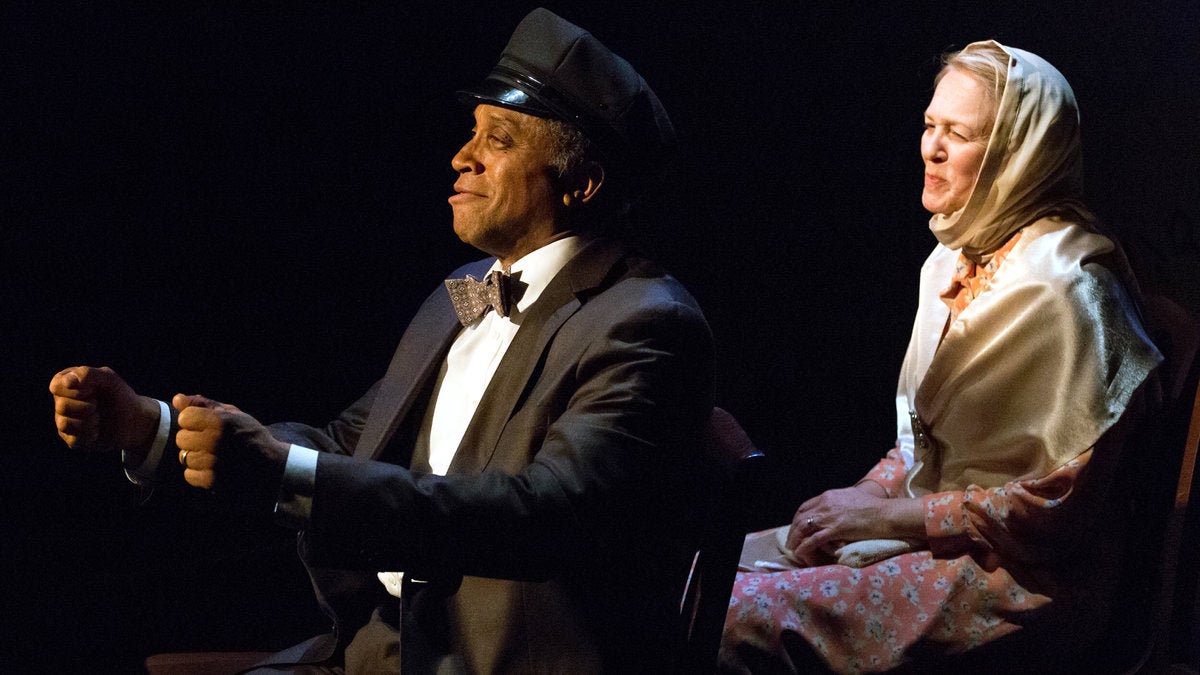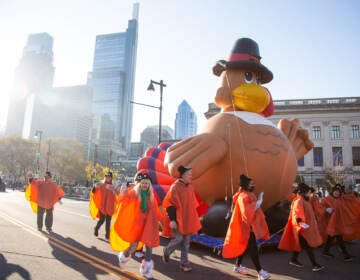Review: The fun-ride part of ‘Driving Miss Daisy’

Johnnie Hobbs Jr. and Wendy Scharfman in "Driving Miss Daisy" at Walnut Street Theatre’s Independence Studio on 3. (Photo courtesy of Mark Garvin)
The lighter-hearted “Driving Miss Daisy” that opened Thursday night in Walnut Street Theatre’s third-floor Independence Studio is not one I’d expected to see – and it speaks to the flexibility of the play.
In other productions, a taut vein of tension runs through the fast, tightly-written scenes that compose Alfred Uhry’s 1987 play, which won a Pulitzer for drama. Two years later, Uhry’s screenplay won an Oscar, and so did “Driving Miss Daisy,” for best picture. Oddly, the play itself never made a Broadway debut until 2010.
In the production at the Walnut, producing artistic director Bernard Havard stages the play to exploit its humor. There’s a lot of humor in “Driving Miss Daisy,” yet there’s also a running poignancy that becomes stronger as Miss Daisy goes from age 72 at the opening line to 97 when the last lights fade (all in the space of about 80 minutes). The end of the play, for sure, is no less moving at the Walnut than elsewhere, but it comes as a little surprise, a mood swing.
The bigger surprise is that the play withstands this reading. Havard’s production doesn’t seem disjointed or any worse for a shifting tone. It’s just different, especially if you’ve seen “Daisy” on a few other stages. And it’s time: The play has carried heavy luggage over the years, spurring a lot of writing and talk about the relations between blacks and Jews, and the idea of Jews in the South – “Driving Miss Daisy” has the sort of impact that theater companies covet, but it’s not a doctoral thesis.
In addition to its culture-clash theme, “Daisy” is a well-written look at growing old, and at what defines friendship. In this Jewish household in Atlanta, Miss Daisy’s grown son hires a black chauffeur to drive his car-crashing mom who can no longer get reasonable auto insurance. She’s dead-set against being carted around – the driver is her world’s worst imposition. How can this be resolved? It’s the way two souls mesh that ultimately drives “Daisy.”
Wendy Scharfman and Johnnie Hobbs Jr. play the sparring partners to a hilt – if you’re going extrude the comedy from the script, you’d better have the timing and tone of these two actors to make it work. While other Miss Daisys may be shrill in high dudgeon, Scharfman is simply no-nonsense; she need only speak directly to make herself known. To this, Hobbs offers an equal measure of straightforward attitude. He isn’t servile in defeat, and you generally don’t see exasperation in his face. This is a “Driving Miss Daisy” without irony – which helps bring out the laughs, as we ourselves sense the irony somewhere underneath the portrayals. Just as straightforward, the two actors age together on stage naturally.
Bill Van Horn, as Daisy’s son, looks too old for the part in the beginning and overplays a comic hand in this interpretation. His performance has a cartoonish edge – part of that comes from a half-smile that makes it hard for us to see admiration and uncertainty, two qualities that make the character more than just a fixture. While the performances from Scharfman and Hobbs begin to feel organic, we’re always aware that Van Horn is acting.
Havard’s production uses the mood-setting original music Robert Waldman wrote for the show and plays out on Andrew Thompson’s functional set on the intimate third-floor Walnut stage. Part of the play’s charm, in productions I’ve seen, is the way actors use four chairs to effectively create the image of a car in motion. It works here, just as well.
“Driving Miss Daisy” runs through Feb. 2 at Walnut Street Theatre’s third-floor Independence Studio, Walnut Street between Eighth and Ninth Streets. 215-574-3550 or walnutstreettheatre.org.
WHYY is your source for fact-based, in-depth journalism and information. As a nonprofit organization, we rely on financial support from readers like you. Please give today.




